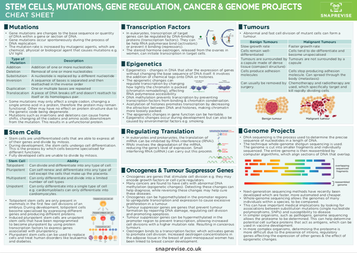A-LEVEL BIOLOGY AQA NOTES
alteration of the sequence of bases in dna can alter the structure of proteins
Mutations
- Gene mutations are changes to the base sequence or quantity of DNA within a gene or section of DNA.
- Gene mutations occur spontaneously during the process of DNA replication.
- The mutation rate is increased by mutagenic agents, which are chemical, physical or biological agent that causes mutations e.g. UV light
Type of Mutation |
Description |
Addition |
Addition of one or more nucleotides |
Deletion |
Removal of one or more nucleotides |
Substitution |
A nucleotide is replaced by a different nucleotide |
Inversion |
A sequence of bases is separated and then reattached in the inverse order |
Duplication |
One or multiple bases are repeated |
Translocation |
A piece of DNA breaks off and doesn't reattach to itself or its homologous pair. |
- Some mutations may only affect a single codon, changing a single amino acid in a protein, therefore the protein may remain functional. Other may have no effect on protein structure due to the genetic code being degenerate.
- Mutations such as insertions and deletions can cause frame shifts, changing all the codons and amino acids downstream from the mutation. This results in a unfunctional protein.

